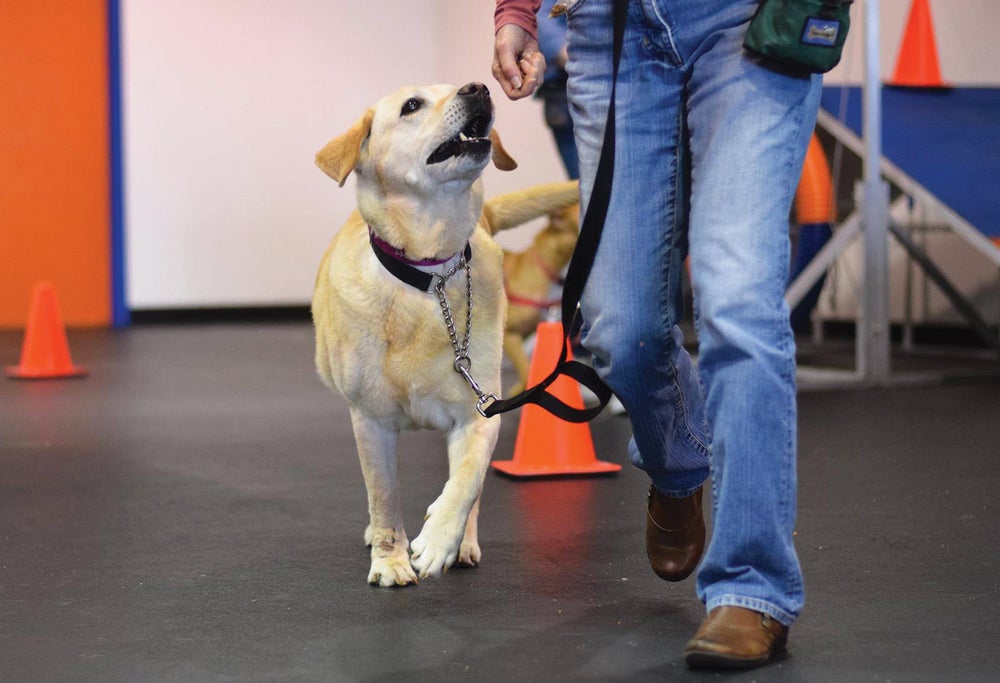When This Dog Training Company Went Off-Course, The Owner Took a Time-Out. Here’s How He Got It Back on All Fours.
Zoom Room CEO Mark Van Wye found the value of stepping back to reassess.
By Madeline Garfinkle. This story appears in the September 2022 issue of Entrepreneur.
Mark Van Wye is in the dog-training business. But to thrive, he needed to do a better job training his own business.

“We made a lot of the classic mistakes that many new franchises do,” he admits now. His business, Zoom Room, offers dog-training classes, as well as “a fun, sporty place” where owners can play with their pups. It was inspired by a sport called dog agility, where dogs run through obstacle courses. “We wanted to demystify dog training completely,” Van Wye says, and dog owners jumped at the opportunity. His company started franchising in 2009 and grew to 20 units in five years, but then those early franchisees started failing. By 2019, Zoom Room was down to six franchised units — and Van Wye had put a two-year moratorium on new locations, giving himself time to fix the business. Now he’s up to 24 units currently open and 60 units opening soon across 21 states. Here’s what he did to get tails wagging again.
What were those early years like?
There was an initial excitement — but when I took my head out of the sand, I realized that although we had stores open, they weren’t doing particularly well. We weren’t doing enough thorough vetting of franchisees, weren’t putting any investment into real estate teams to make sure they were picking the perfect location, and we didn’t have a grasp on what the unit economics were.
So you hit pause on new store openings. What then?
First, we needed to introduce the idea that our service was repeatable. When we started, we offered a six-week program — you do it, you get a certificate, and it’s over. So I created a curriculum that you could do for your entire life with your dog. Second, we focused on marketing and technology. We had this tremendous database about our customers, so how could we reach more people just like them? We built out our own algorithm and software to find the right people in the community, let them know about the business, and had additional layers of technology to retain and keep them engaged.
The last piece was scheduling — having people come in as much as possible. We set up a credit system, so customers didn’t have to make any big commitments. And we added flexibility. This is quite normal in, let’s say, a yoga class: You drop in when you can. By reducing all the friction points of when you can come in, what commitment you’re signing up for, and having so many options available through positive reinforcement, that led to immediate success.

Image Credit: Courtesy of Zoom Room
Did you consider larger changes to the business?
We didn’t raise prices, we didn’t add other lines [of revenue]. The classic mistake that businesspeople make is, “Oh, we’re not making enough money; let’s add grooming or daycare.” But we didn’t change the fundamental nature of Zoom Room, which is that we do dog training with an emphasis on socialization. We changed subtle things that affected the rate at which people purchased classes, how frequently they came, and the ability to target the ads effectively with our tech. A nickel here and a nickel there is how you get to every unit doing six figures of profits every year.
What advice do you have for others who hit a similar roadblock?
There must be something that’s driving you. If you’ve got a business that has plateaued or is failing, then you can’t be doing it for the money, because there are a lot of easier ways to make money than to take on something that is stale, stagnant, or broken. You’ve got to be led by something, whether it’s mission-driven or purpose-driven. If you have that passion and ability to commit, go all-in, and build up the team that you need to accomplish that vision, then I think you can do it.
